Search Images
Browse Content (p. 1399)
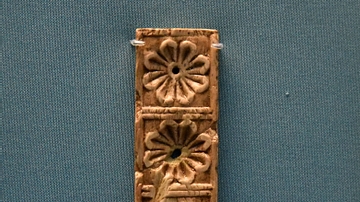
Image
Small Nimrud Ivory Panel of Three Rosettes
Never seen by the Public before 2011. A small fragment of an ivory plaque from Nimrud. It was a carved panel with 3 perpendicular rosettes. The golden overlay is still intact. Neo-Assyrian Period, 9th to 8th centuries BCE. From Nimrud (ancient...
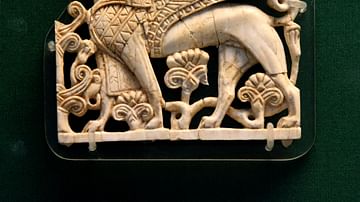
Image
Nimrud Ivory Plaque of an Egyptian Sphinx
A winged human-headed sphinx wears the double crown of Egypt. An apron hangs down on the chest with a projecting uraeus (rearing cobra) similar to those worn by Egyptian pharaohs. A striking Phoenician style. Excavated by Sir Max Mallowan...
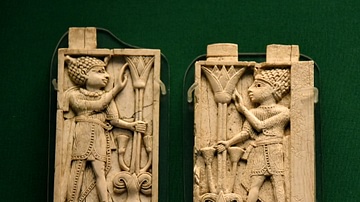
Image
Nimrud Ivory Panels of Two Egyptian Kings
Two panels from a much larger composition, each showing a youth dressed in Egyptian royal costume grasping a tree formed by a lotus flower arising from a double volute. On the front of the lower right-hand tenon of the right ivory panel...
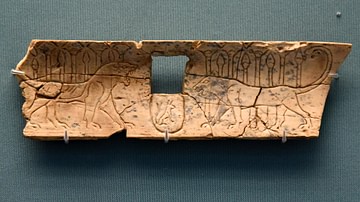
Image
Nimrud Ivory Panel of Two Lionesses
Never seen by the public before 2011. A small fragment of an ivory plaque from Nimrud. On the ivory plaque, there are 2 carved roaring lionesses facing each other. Neo-Assyrian Period, 9th to 8th centuries BCE. From Nimrud (ancient Kalhu...
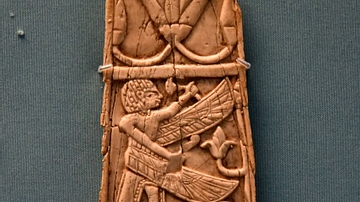
Image
Nimrud Ivory Panel of a Winged Man
Never seen by the public before 2011. A small fragment of an ivory plaque from Nimrud. It shows a standing winged Egyptian man holding a stem of a lotus flower branching from a tree. The upper part shows a large lotus flower. Phoenician art...
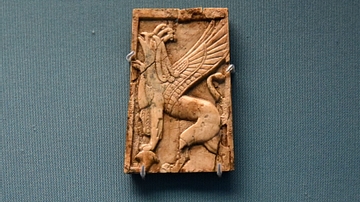
Image
Nimrud Ivory Panel of a Winged Animal
Never seen by the public before 2011. A small fragment of an ivory plaque from Nimrud. The panel shows a winged 4-legged animal (mythical creature). Phoenician art. Neo-Assyrian Period, 9th to 8th centuries BCE. From Nimrud (ancient Kalhu...
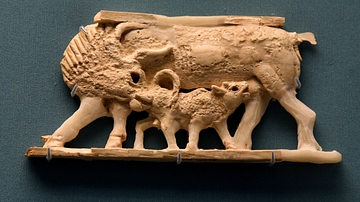
Image
Nimrud Ivory Panel of a Suckling Calf
Never seen by the public before 2011. A small fragment of an ivory plaque from Nimrud. A standing cow turns her head towards a small calf. The calf appears to suckle milk from the cow's nipples. Neo-Assyrian Period, 9th to 8th centuries BCE...
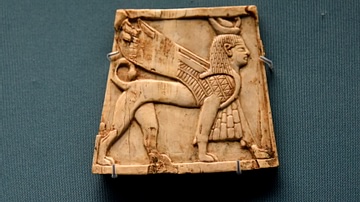
Image
Nimrud Ivory Panel of a Winged Sphinx
Never seen by the public before 2011. A small fragment of an ivory plaque from Nimrud. This winged-sphinx is Egyptian and wears the double crown of Egypt as well as a chest apron, the typical royal costume of Egyptian pharaohs. Phoenician...
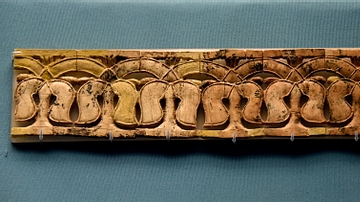
Image
Nimrud Ivory Panel of Stylized Palms
Never seen by the public before 2011. A small fragment of an ivory plaque from Nimrud. There are repeated motifs of small stylized palm trees, arranged horizontally. Neo-Assyrian Period, 9th to 8th centuries BCE. From Nimrud (ancient Kalhu...
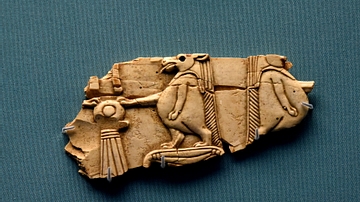
Image
Nimrud Ivory Panel of Tawaret
Never seen by the public before 2011. A small fragment of an ivory plaque from Nimrud. Two figures of the Egyptian goddess Tawaret (the demon-wife of Apep and the first god of evil) can be seen. Phoenician art. Neo-Assyrian Period, 9th to...